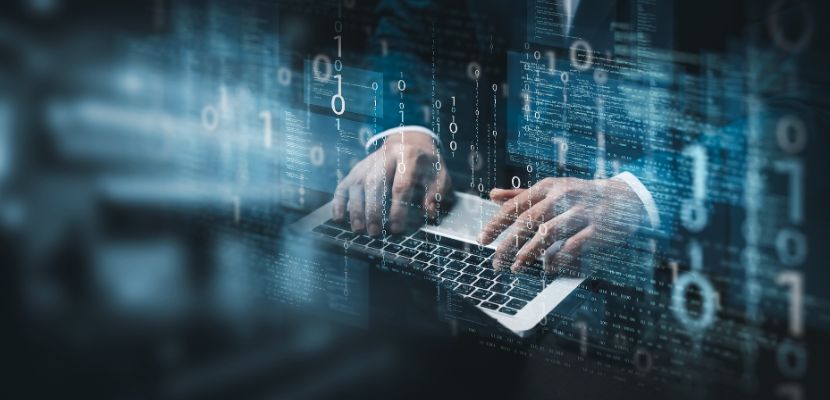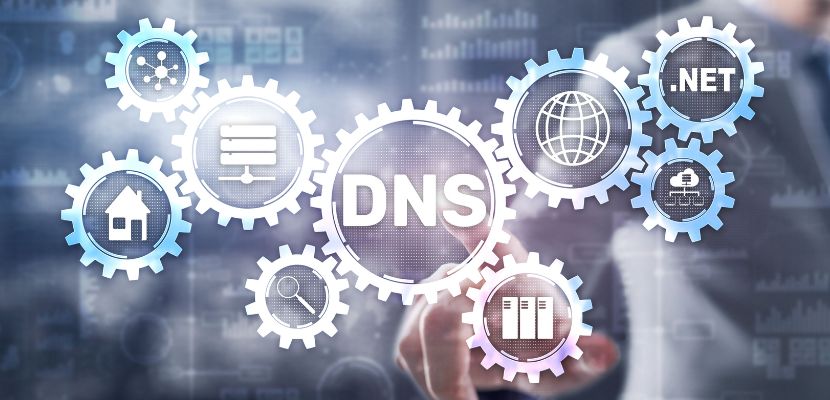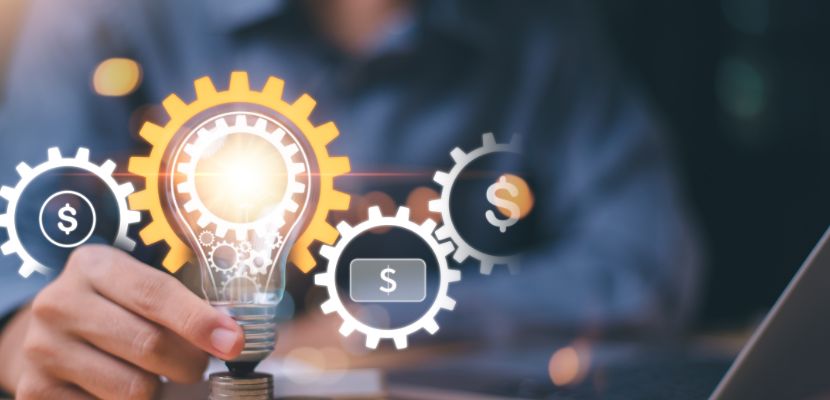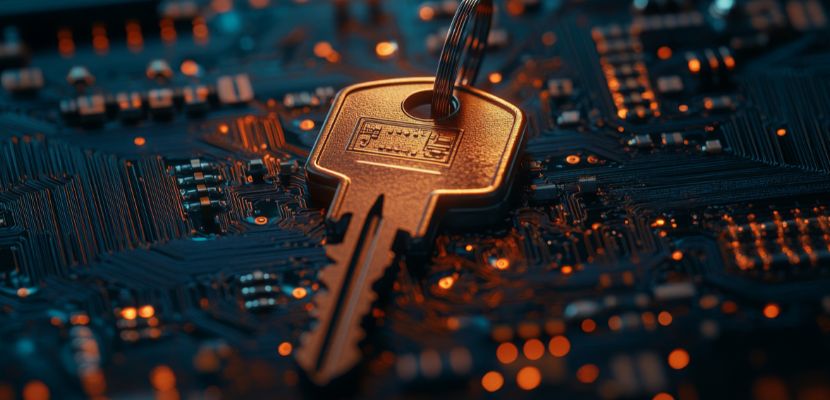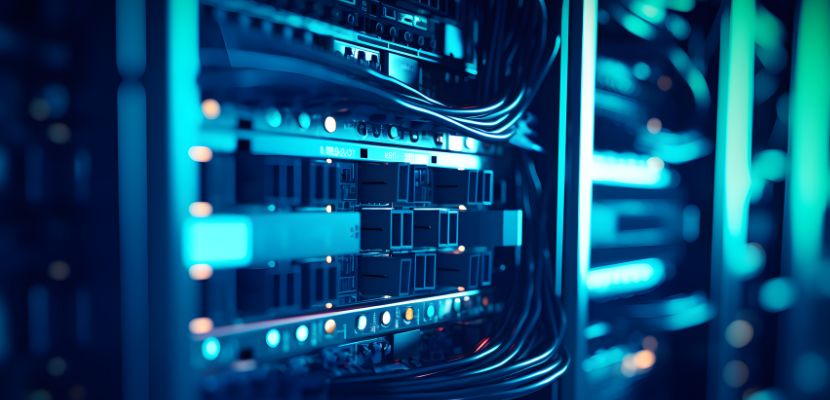PHP Definition - What Is PHP?
PHP is a widely used open-source scripting language primarily designed for web development.

What Is PHP?
PHP, short for Hypertext Preprocessor, is a server-side scripting language widely used for building dynamic and interactive web applications. It is executed on the server, generating HTML or other output that is sent to the client’s browser, which means end users never see the underlying PHP code. The language integrates easily with HTML and can also interact with databases, files, and external services, making it highly versatile for web development.
PHP supports object-oriented, procedural, and functional programming paradigms, offering flexibility in how developers structure their applications. It is platform-independent and works across major operating systems and web servers, while also supporting a wide range of databases such as MySQL, PostgreSQL, and Oracle.
PHP’s simplicity and extensive ecosystem of frameworks, libraries, and tools have contributed to its long-standing popularity in powering websites, content management systems, and web-based applications.
PHP Syntax
PHP syntax is designed to be straightforward and flexible, borrowing familiar conventions from C, Java, and Perl while adding its own rules. It is primarily used for embedding dynamic server-side logic within HTML, making it especially useful for web development. The syntax emphasizes readability, dynamic typing, and seamless integration with markup, which together allow developers to build dynamic pages quickly and efficiently.
- PHP scripts are embedded in HTML and enclosed within <?php ... ?> tags.
- Each PHP statement ends with a semicolon (;).
- Code blocks are grouped using curly braces { }.
- Variables are prefixed with a dollar sign ($).
- PHP is loosely typed, with data types assigned dynamically at runtime.
- Type casting and type hints can be applied for stricter control.
- Control structures such as if, else, while, and for are supported.
- Functions can accept parameters and return values.
- Strings can use single or double quotes, with double quotes allowing variable interpolation.
- Comments can be written with //, #, or /* ... */.
- PHP files can contain both static HTML and dynamic PHP code.
Features of PHP
PHP comes with a range of features that make it one of the most widely adopted languages for server-side web development. Its capabilities extend beyond simple scripting, allowing for robust, scalable, and secure application development. Here are the main features of PHP:
- Open-source and free. PHP is distributed under an open-source license, meaning anyone can download, use, and modify it without cost. This accessibility has built a large global community that contributes to improvements, documentation, and frameworks.
- Cross-platform compatibility. PHP runs on all major operating systems, including Windows, Linux, macOS, and various UNIX flavors. It is compatible with most popular web servers like Apache, Nginx, and Microsoft IIS, making it flexible for deployment in diverse environments.
- Easy integration with HTML and databases. PHP is designed to be embedded directly into HTML, which simplifies the process of creating dynamic web pages. It supports integration with a wide range of databases such as MySQL, PostgreSQL, Oracle, and MongoDB, providing strong data handling capabilities.
- Rich library and built-in functions. PHP includes an extensive set of built-in functions for file handling, form validation, session management, and string manipulation. Its standard library reduces the need to write repetitive code and speeds up development.
- Support for multiple programming paradigms. PHP supports procedural programming, object-oriented programming, and even some aspects of functional programming. This flexibility allows developers to choose the best approach depending on the project’s complexity.
- Scalability and performance. PHP is optimized for web applications and can handle high-traffic sites efficiently, especially when used with caching systems like OPcache or integrated into frameworks. Websites like Facebook and Wikipedia initially relied on PHP for large-scale deployments.
- Security features. PHP offers mechanisms such as data encryption, hashing functions, and secure session handling to protect web applications. With proper coding practices, it can help mitigate common vulnerabilities like SQL injection or cross-site scripting (XSS).
- Extensibility and framework support. PHP can be extended through custom extensions and has strong support from frameworks such as Laravel, Symfony, and CodeIgniter. These frameworks provide pre-built modules, security features, and architectural patterns that improve productivity.
- Large community and documentation. PHP’s vast community ensures extensive documentation, tutorials, and third-party tools. Developers can easily find support, libraries, and frameworks to accelerate development and troubleshooting.
- Continuous updates and compatibility. PHP is continuously updated with new features and performance improvements. Modern versions introduce features like scalar type declarations, namespaces, and enhanced error handling, keeping the language relevant in modern software development.
How Does PHP Work?

PHP works as a server-side scripting language that processes code on the server before delivering the final output to the client’s browser.
When a user requests a PHP-enabled web page, the request is sent to the web server, which identifies and passes the PHP code to the PHP interpreter. The interpreter executes the PHP instructions, which can involve tasks such as retrieving data from a database, processing form input, generating dynamic content, or interacting with files and external services. Once executed, PHP outputs plain HTML (or other formats like JSON or XML), which is then sent back to the client’s browser for display.
Unlike client-side languages such as JavaScript, PHP runs entirely on the server, and users only see the resulting output rather than the underlying code. This design ensures better control over sensitive logic, data handling, and application workflows.
PHP can be integrated with various databases and works seamlessly with HTML, CSS, and JavaScript, making it a key component in building interactive and data-driven websites. Its execution model provides a straightforward way to create dynamic applications while keeping the processing hidden from end users.
What Is PHP Used For?
PHP is primarily used for developing dynamic, server-side web applications, but its versatility allows it to serve a broad range of purposes in web and software development. Its most common use is in generating dynamic content that adapts based on user input, database queries, or session data, enabling websites to be interactive rather than static. PHP is also widely used for backend logic such as handling authentication, managing sessions and cookies, processing forms, and implementing access control.
Another major use case of PHP is in database-driven applications. It integrates seamlessly with relational databases like MySQL and PostgreSQL, as well as NoSQL solutions such as MongoDB, to build content management systems, ecommerce platforms, and customer portals. Popular CMS platforms like WordPress, Drupal, and Joomla are written in PHP, making it the backbone of a large portion of the modern web.
Beyond web applications, PHP can be used for command-line scripting to automate tasks such as cron jobs, log parsing, or server maintenance. It also supports building APIs and web services, allowing PHP-based applications to interact with mobile apps and third-party systems. With the help of frameworks like Laravel, Symfony, or CodeIgniter, PHP is used to create scalable enterprise applications, RESTful APIs, and microservices.
What Are the Advantages and Disadvantages of PHP
PHP offers a wide range of advantages that make it popular for building dynamic web applications, but it also comes with drawbacks that can affect performance, security, and scalability if not addressed properly.
PHP Advantages
PHP provides a range of benefits that have made it one of the most widely used server-side scripting languages for web development. Its flexibility, large ecosystem, and ease of integration make it suitable for projects of all sizes. Here are the main advantages of PHP:
- Open source and free. PHP is distributed under an open-source license, meaning developers can use it without cost and benefit from ongoing community contributions, updates, and resources.
- Easy to learn and use. Its syntax is simple and closely resembles C and Java, making it accessible to beginners while still powerful enough for advanced developers.
- Platform independence. PHP runs on all major operating systems, including Windows, Linux, macOS, and Unix. It also supports multiple web servers, ensuring flexibility in deployment environments.
- Strong database support. PHP integrates seamlessly with databases like MySQL, PostgreSQL, Oracle, and MongoDB, enabling the creation of dynamic, data-driven applications.
- Fast performance for web applications. As a server-side language optimized for web use, PHP can handle large volumes of requests efficiently, especially when combined with caching mechanisms like OPcache.
- Large standard library and extensions. PHP offers built-in functions for handling sessions, file operations, string processing, and more. It can also be extended with third-party libraries and custom modules.
- Extensive framework and CMS ecosystem. Frameworks like Laravel, Symfony, and CodeIgniter, along with CMS platforms such as WordPress and Drupal, accelerate development and enforce best practices.
- Strong community and documentation. With a massive developer community, PHP provides abundant tutorials, forums, and official documentation, making it easy to find solutions and support.
- Flexibility in programming paradigms. PHP supports procedural, object-oriented, and functional programming styles, allowing developers to structure applications in multiple ways.
- Security features. While PHP requires secure coding practices, it provides built-in functions for encryption, hashing, and input validation to help mitigate common vulnerabilities.
PHP Disadvantages
While PHP is widely adopted and has powered much of the web for decades, it is not without limitations. Developers often encounter challenges related to performance, maintainability, and security, especially in large-scale or modern application contexts. Understanding these drawbacks is essential when evaluating PHP for new projects:
- Inconsistent and outdated design patterns. PHP was originally designed for small web projects, and over time it grew organically. As a result, it lacks the consistency found in languages that were built with modern software engineering practices in mind. This can lead to code that is harder to structure and maintain, especially in legacy projects.
- Security concerns. Although PHP provides mechanisms for secure development, its popularity and ease of use have made it a frequent target for attackers. Poor coding practices, outdated libraries, or misconfigured servers often result in vulnerabilities such as SQL injection, cross-site scripting (XSS), and remote code execution.
- Performance limitations. Compared to compiled languages like Java or C#, PHP can be slower because it is an interpreted language. While newer versions and caching mechanisms like OPcache have improved performance, resource-intensive or large-scale applications may still face bottlenecks.
- Weak type system. PHP is loosely typed, which can lead to unexpected behavior when variables change types during execution. This flexibility can be convenient for small scripts but introduces complexity and bugs in larger applications if not carefully managed.
- Fragmented ecosystem and legacy code. PHP has a vast ecosystem of libraries and frameworks, but the quality and consistency vary significantly. Many older applications still run on outdated versions of PHP, which are no longer supported, creating security and compatibility risks.
- Less suitable for modern application architectures. Although PHP frameworks like Laravel and Symfony bring modern features, PHP as a language is often less preferred for microservices, real-time applications, and high-concurrency systems compared to alternatives such as Node.js, Go, or Python.
- Dependency on web context. PHP was primarily designed for web development and is not as strong in non-web use cases. While it can be used for command-line scripting or APIs, it lacks the versatility of languages that were built for multiple domains from the start.
PHP FAQ
Here are the answers to the most frequently asked questions about PHP.
Is PHP Hard to Learn?
PHP is generally considered easy to learn, especially for beginners in web development. Its syntax is straightforward and similar to languages like C, Java, and Perl, which makes it familiar to anyone with prior programming experience.
PHP is also forgiving in its rules. Namely, variables don’t require explicit type declarations, and code can often be written in a flexible, procedural style without the need for complex structures. This low entry barrier, combined with the ability to quickly embed PHP into HTML, allows new developers to see immediate results when building dynamic web pages.
However, while the basics of PHP are simple to pick up, mastering the language can be more challenging. As applications grow in complexity, developers need to learn best practices in areas such as object-oriented programming, secure coding, dependency management, and framework usage. Without these practices, projects risk becoming unstructured, difficult to maintain, or insecure.
In essence, PHP is easy to start with but requires discipline and deeper study to use effectively in large-scale or professional applications.
Is PHP Backend or Frontend?
PHP is a backend programming language. It runs on the server side, where it handles tasks such as processing requests, interacting with databases, managing sessions, and generating dynamic content. Once the PHP code is executed, the server sends the resulting output, usually in the form of HTML, JSON, or XML, to the client’s browser. The browser then renders this output using frontend technologies like HTML, CSS, and JavaScript.
Because PHP executes entirely on the server and is not visible to the user, it is not used for frontend development. Instead, it complements frontend languages by powering the application logic and data handling that enable interactive, data-driven web applications.
What Is the Difference Between HTML and PHP?
Here’s a clear comparison of PHP as backend vs. frontend in table:
| Aspect | Frontend (client-side) | Backend (server-side/PHP) |
| Execution | Runs in the user’s browser. | Runs on the server before sending output to the browser. |
| Languages used | HTML, CSS, JavaScript. | PHP, Python, Java, Node.js, etc. |
| Visibility | Code is visible to users (can view in browser). | Code is hidden from users (processed on server). |
| Primary role | Manages presentation, layout, and interactivity. | Handles logic, database operations, authentication, sessions. |
| Output | Directly rendered by the browser. | Generates HTML, JSON, or XML that frontend uses. |
| Security | More exposed; users can inspect or modify. | More secure; sensitive logic and data remain on the server. |
Can I Learn PHP Without Knowing HTML?
Technically, you can learn PHP without knowing HTML, but in practice it will not be very useful. PHP is designed to generate and manipulate web content, and that output is usually in the form of HTML sent to the browser. If you don’t know HTML, you’ll be able to write PHP scripts, process logic, and even connect to databases, but you won’t fully understand how the output is displayed or how to structure web pages properly.
Learning PHP without HTML is similar to learning how to build the engine of a car without knowing how the steering wheel, pedals, and dashboard work. You’ll understand how the backend logic operates, but you won’t know how to present the results to users effectively. For real-world web development, a solid grasp of HTML (and CSS, JavaScript) is essential alongside PHP.



























